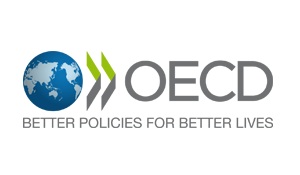
OECD membership includes 34 developed and emerging economies. Members besides the United States range in size from the United Kingdom to Slovenia. Mexico, Chile and Turkey are among the current emerging economies that are members of the OECD. China is not a member, and Russia’s application for membership is on hold.
The so-called Major Seven OECD economies — the United States, Germany, the United Kingdom, Italy, Canada, France and Japan — posted first-quarter growth of just 0.2%, compared with 0.7% in the prior quarter. Growth in the European Union was flat at 0.4%, and among the eurozone members growth improved from 0.3% to 0.4%.
Year over year, total OECD growth was 1.9%, up from year-over-year growth of 1.8% in the fourth quarter. Growth among the Major Seven rang in at 1.7%. Compared with a year ago, Japan fared worst, down 1.4%, the only member of the Major Seven to show a drop in growth. Month over month, however, Japan posted a gain of 0.6%, tied with France for the best performance among the Major Seven countries.
Italy, which had posted yearly GDP contraction for 13 straight quarters, posted growth that was flat with a year ago. Year over year, the U.S. economy rose by 3%, the most of any of the Major Seven countries.
The U.S. Bureau of Economic Analysis released its first estimate of U.S. first-quarter GDP growth in late April, a disappointing 0.2% in current dollars. Real GDP rose just 0.1%. The second estimate is due out on Friday. The first estimate came in much lower than expected, and led to reductions in forecasts for future quarters. Macroeconomic Advisers cut its estimate from 2.2% second-quarter growth to 2.0%. Deutsche Bank economists cut their growth estimate from 4.0% to 2.5% for the second quarter.
ALSO READ: $100 Billion Cut From Global Energy Projects
In 20 Years, I Haven’t Seen A Cash Back Card This Good
After two decades of reviewing financial products I haven’t seen anything like this. Credit card companies are at war, handing out free rewards and benefits to win the best customers.
A good cash back card can be worth thousands of dollars a year in free money, not to mention other perks like travel, insurance, and access to fancy lounges.
Our top pick today pays up to 5% cash back, a $200 bonus on top, and $0 annual fee. Click here to apply before they stop offering rewards this generous.
Flywheel Publishing has partnered with CardRatings for our coverage of credit card products. Flywheel Publishing and CardRatings may receive a commission from card issuers.
Thank you for reading! Have some feedback for us?
Contact the 24/7 Wall St. editorial team.


